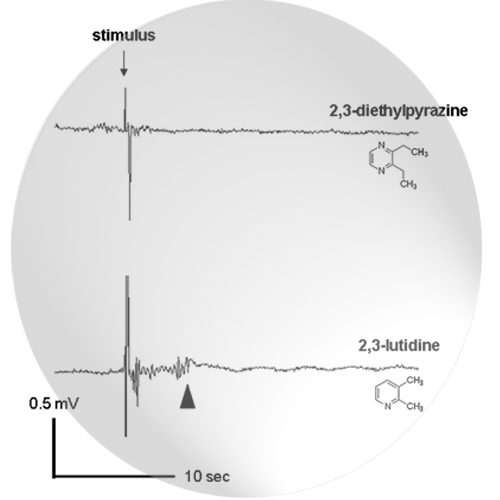Odorant-evoked electrical responses in Grueneberg ganglion neurons rely on cGMP-associated signaling proteins
28-Feb-2013
Neuroscience Letters, 2013, http://dx.doi.org/10.1016/j.neulet.2013.01.032, Volume 539, Pages 38–42 published on 28.02.2013
Neuroscience Letters, online article
Neuroscience Letters, online article
The Grueneberg ganglion (GG) in the anterior nasal region of mice is considered as an olfactory compartment since its neurons were recently observed to be activated by chemical stimuli, in particular by the odorant 2,3-dimethylpyrazine (2,3-DMP). However, it is unclear whether the GG indeed serves an olfactory function since these findings are solely based on the expression of the activity-dependent gene c-Fos. Consequently, it is yet uncertain whether chemical compounds, such as given odorants, elicit electrical responses in GG neurons which are required to convey the chemosensory information to the brain. Therefore, in the present study, electrical recording experiments on tissue sections through the anterior nasal region of mice were conducted which revealed that 2,3-DMP induces electrical signals in the GG. These responses were restricted to sites harboring GG neurons, indicating that 2,3-DMP elicits an electrical signal only in these but not in other cells of the anterior nasal region. 2,3-DMP-sensitive GG neurons express signaling proteins associated with the second messenger substance cyclic guanosine monophosphate (cGMP); most notably the cyclic nucleotide-gated ion channel CNGA3 and the transmembrane guanylyl cyclase GC-G. Using mice deficient for CNGA3 or GC-G demonstrated that the 2,3-DMP-evoked electrical signals in the GG of these knockout mice were substantially lower than in the GG of wildtype conspecifics, indicating that cGMP signaling plays a crucial role for odorant-induced electrical responses in the GG.











